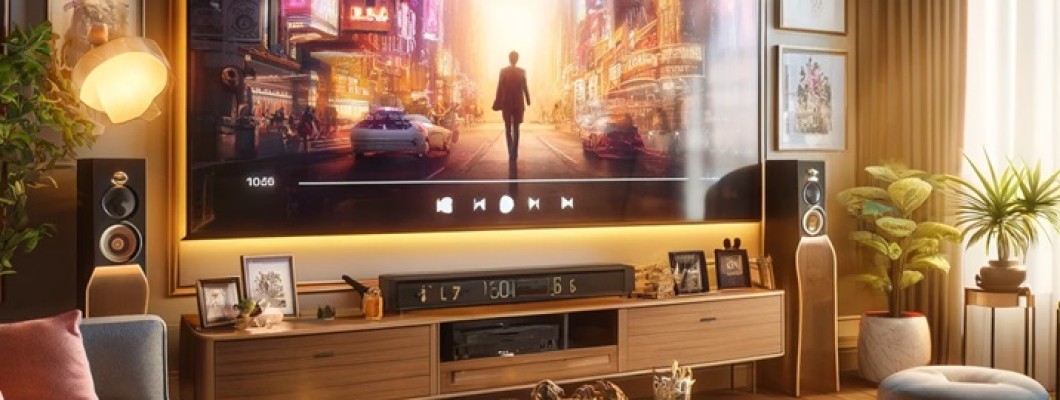
Buying a new TV can be a thrilling yet overwhelming experience. With so many options on the market, it's easy to get lost in a sea of specifications, sizes, and features. Whether you're a movie buff, a gaming enthusiast, or simply looking to upgrade your living room, this comprehensive TV buying guide will help you make an informed decision. Let’s dive in!
1. Determine Your Budget
The first step in buying a TV is setting a budget. TVs come in a wide range of prices, from under $200 to several thousand dollars. Your budget will significantly narrow down your options, making it easier to find a TV that suits your needs.
Key Tip: Keep an eye out for sales and discounts, especially during major shopping events like Black Friday, Cyber Monday, and holiday seasons.
2. Choose the Right Size
The size of the TV is one of the most critical factors to consider. To determine the ideal size, think about the distance between your TV and seating area. A general rule of thumb is to divide the distance (in inches) by 1.6 to get the minimum screen size.
For example, if you sit about 8 feet (96 inches) away from the TV, a 60-inch screen would be a good starting point. However, personal preference and room aesthetics also play a role.
Popular TV Sizes:
- Small Rooms: 32-43 inches
- Medium Rooms: 50-65 inches
- Large Rooms: 70 inches and above
3. Understand the Different Types of Displays
TVs come with different types of display technologies, each with its own pros and cons. The main types are LED, OLED, and QLED.
LED (Light Emitting Diode):
- Pros: Affordable, bright, energy-efficient
- Cons: Limited viewing angles, less contrast compared to OLED
OLED (Organic Light Emitting Diode):
- Pros: Superior picture quality, true blacks, wide viewing angles
- Cons: More expensive, potential risk of burn-in
QLED (Quantum Dot LED):
- Pros: Bright, vibrant colors, long lifespan
- Cons: Higher cost than LED, not as good as OLED in dark room performance
4. Resolution Matters
Resolution refers to the number of pixels that make up the picture on the screen. The higher the resolution, the sharper and more detailed the image.
HD (High Definition): 720p
- Suitable for smaller screens and basic viewing.
Full HD: 1080p
- Great for most purposes, offering good picture quality at an affordable price.
4K (Ultra HD): 2160p
- Four times the resolution of Full HD, providing exceptional clarity and detail. Ideal for larger screens and future-proofing.
8K:
- Currently the highest resolution available, but with limited content and very high prices. Best for those looking to invest in cutting-edge technology.
5. Refresh Rate and Motion Handling
The refresh rate, measured in Hertz (Hz), indicates how many times the TV refreshes the image per second. Higher refresh rates result in smoother motion, which is especially important for gaming and sports.
- 60Hz: Standard for most TVs, suitable for everyday viewing.
- 120Hz: Better for fast-paced action and gaming.
- 240Hz and above: Mostly found in high-end models and beneficial for specific content.
Motion Handling: Look for features like "motion smoothing" or "interpolation" that help reduce blur during fast-moving scenes.
6. Smart TV Features
Most modern TVs come with smart features, allowing you to stream content from services like Netflix, Hulu, and Amazon Prime directly on your TV.
Key Features to Consider:
- Operating System: Popular ones include Roku TV, Google TV, Amazon Fire TV, and proprietary systems like Samsung's Tizen and LG's webOS.
- App Availability: Ensure the TV supports all your favorite streaming apps.
- Voice Control: Integration with voice assistants like Alexa, Google Assistant, or Siri for added convenience.
7. Connectivity Options
Make sure the TV you choose has enough ports to connect all your devices, such as gaming consoles, soundbars, and Blu-ray players.
Essential Ports:
- HDMI: Look for at least 3 HDMI ports. HDMI 2.1 is ideal for gaming.
- USB: Useful for playing media files directly from a USB drive.
- Ethernet: For a more stable internet connection.
- Optical/Audio Out: For connecting to sound systems.
8. Audio Quality
While picture quality is crucial, don’t overlook the importance of sound. Many TVs have mediocre built-in speakers, so you might want to invest in a soundbar or a home theater system for a better audio experience.
Key Audio Features:
- Dolby Atmos: Provides a more immersive sound experience.
- DTS:X: Another surround sound technology to enhance audio quality.
9. Consider the Brand
Brand reputation and customer support are essential factors to consider. Some of the most reliable TV brands include Samsung, LG, Sony, and TCL. Researching customer reviews and ratings can give you insights into the quality and durability of a TV.
10. Additional Features to Look For
- HDR (High Dynamic Range): Enhances contrast and color accuracy, providing a more lifelike image.
- Gaming Features: Variable Refresh Rate (VRR), Auto Low Latency Mode (ALLM), and compatibility with consoles like PS5 and Xbox Series X.
- Energy Efficiency: Look for TVs with Energy Star ratings to save on electricity bills.
- Design: Slim bezels, cable management, and wall-mounting options can add to the aesthetic appeal of your room.
Final Tips
- Check the Return Policy: Ensure the store offers a good return policy in case the TV doesn't meet your expectations.
- Extended Warranty: Consider purchasing an extended warranty for additional peace of mind, especially for higher-end models.
- In-Store vs. Online: While online shopping often offers better deals, visiting a store allows you to see the TV in person before making a decision.
Conclusion
Buying a new TV is an investment that should bring you joy and satisfaction for years to come. By considering your budget, understanding the different technologies, and prioritizing features that matter most to you, you'll be well-equipped to make the right choice. Happy shopping, and enjoy your new viewing experience with Shop Laval!

Leave a Comment